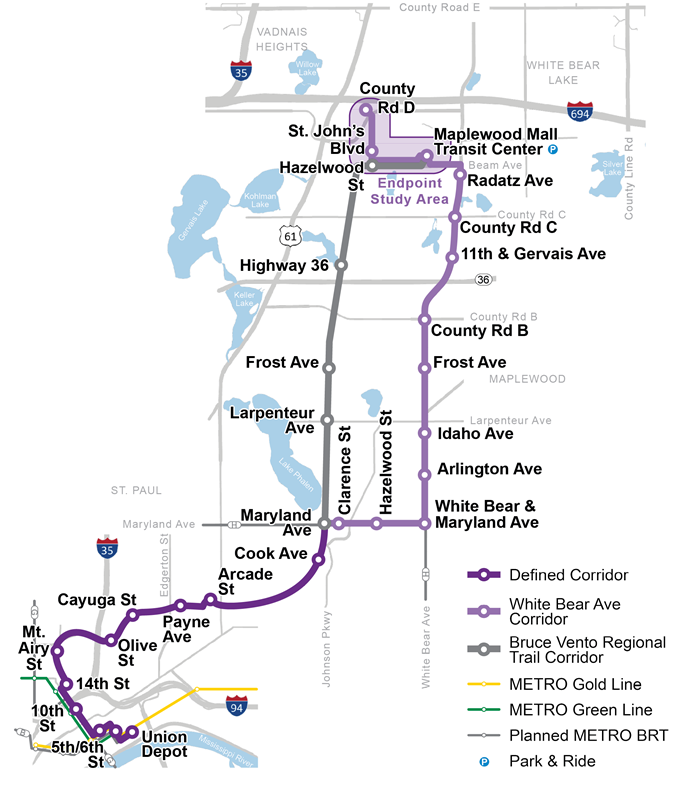Route Modification Study Phase II – White Bear Avenue and Bruce Vento Regional Trail Corridor Comparison

Through 2024, Purple Line staff evaluated several aspects of the White Bear Ave and Bruce Vento Regional Trail corridors to inform the selection of a revised locally preferred alternative.
The Bruce Vento Regional Trail Corridor is part of the 2017 Purple Line (formerly Rush Line) locally preferred alternative that follows the Ramsey County rail right-of-way from Maryland Avenue to Beam Avenue/Maplewood Mall. The White Bear Ave Corridor was developed in April 2023 following a Ramsey County letter, Purple Line staff recommendation, and concurrence from the Corridor Management Committee (CMC) to study the feasibility of Purple Line operating in dedicated lanes on a reconfigured Maryland, White Bear, and Beam avenues. The Route Modification Study Phase II Report was published in July 2025. The full report is available upon request by emailing [email protected]. See below for links to the executive summary. Note: the two route options that were evaluated for the Maplewood segment in this report do not reflect the current project moving forward.
Read the Route Modification Study Phase II Report Executive Summary
2024 Route Modification Study and Johnson Parkway Engagement
In 2024, project staff shared information and received input on the White Bear Ave. Corridor design options and parallel engagement efforts on the Johnson Parkway Crossing and Arcade Street Station occurred during this period as well (see Appendix G for Johnson Parkway Crossing engagement summary). See below for links to the summary of engagement efforts.
Spring / Summer 2024 Engagement Summary – Full Summary PDF
Previous RMS engagement summary reports: